| Umělec 2005/2 >> Blalla’s Blasphemy: Rediscovering | Просмотр всех номеров | ||||||||||||
|
|||||||||||||
Blalla’s Blasphemy: RediscoveringUmělec 2005/201.02.2005 Travis Jeppesen | profile | en cs de |
|||||||||||||
|
Earth is a sickening foam mattress………climb into my dreamboat of love, of madonna’s shit……….I can give water to everyone………congrats from us over here to you over there…….images on the borders of pain.
Blalla W. Hallman, Blalla’s Cosmic Inspirations Were it not for the inherent injustice of the world, the very injustice that Blalla W. Hallman railed against in his vitriolic paintings, Hallman would be a household name throughout his native Germany as well as the world at large. And yet he was never able to capture that flame of mass intrigue emitted by his arch nemesis Andy Warhol, nor would he have necessarily wanted to. As made clear by his 1991 painting Koofmich! Koofmich!, in which the art market is portrayed as a convention hall filled with proper names and dollar signs, Hallman saw through the corruption plaguing the art world. To him, it was no different than the corruption plaguing every other sphere of the social nexus. From politics to organized religion to popular culture and back again, the sum of all human endeavor is nothing greater than a acrid mass of excrement, violence, and mass stupidity. We spend our days shitting, fucking, and destroying one another beneath the ridiculous symbols we elevate to unreachable heights as reminders of our inferiority, totems in homage to our vain mediocrity, as the planet we find ourselves nesting upon nears its expiration date. To an individual not only aware of this existential condition but acutely sensitive to it, what function can art serve other than a means of survival? In many ways, Hallman’s story is the stuff of classical tragedy. He was born in Silesia in 1941. At the end of the Second World War, his family was expelled from the region, ending up in a refugee camp in West Germany where Hallman was to live out much of his adolescence. This experience led to a feeling of outsiderdom from which he never fully recovered. As he’d state years later in an interview, “As a Silesian, I simply always felt embarrassed, I was embarrassed of this or that, in fact, really, I was basically embarrassed about everything.” After completing his studies at the Kunstakademie in Nuremberg, Hallman was invited by the American painter Norman Stiegelmeier to come to San Francisco. This was in 1967, when San Francisco was emerging as the capital of every American countercultural movement, and his stay there over the next two years would forever alter Hallman, for better or for worse. A letter to his friends dated 10 June 1968 is worth quoting in full, if only to gauge the impact America had on the naďve young German painter from Silesia: Something’s going on in politics here, as you’ve probably heard in Germany. I could hardly have picked a more exciting year [to be here]. Two political murders, an election year, the Vietnam War and a looming civil war. Everything’s been stirred up over here and there’s a real sense of unrest. On top of that, thousands are fleeing the cities since, according to a prediction, parts of California are going to sink into the Pacific soon. That has something or other to do with the asteroids that are flying in close proximity to the earth. If you happen to hear something about it in the news, you’ll know what’s going on, and you can think of me, then. You can’t really imagine what’s it’s like here. Germany is stuck in the darkest Middle Ages in comparison to what’s going on here. Drugs, opium, heroin, LSD, marijuana, etc., all are consumed here like we drink beer. Only the affects are somewhat different. More and more people are going nuts here, or simply losing it, going crazy. I’ve definitely been enriched through certain experiences on my trip through America, believe you me. America is a singular insane asylum. Unfortunately, it was a real insane asylum where Hallman was destined to end his trip in America. Although the details here become a bit hazy, it has basically been established that he fell into an aggressive, violent psychosis, abetted no doubt by high quantities of psychedelic drugs, and was soon after deported back to Germany, where he was diagnosed as schizophrenic. Upon arrival in Germany, he destroyed most of his art work as a means of symbolically cleaning himself. In many respects, this is where his real legacy begins. While he would be in and out of mental institutions throughout the early 70s, it was in the middle of that decade that he began to paint compulsively. According to his friends, from this point onwards until his death in 1997, he began painting like a maniac. He effectively transformed himself into a machine, albeit a highly sophisticated machine that was able to traverse a range of styles – from the Old Masters to the Social Realists – in the formation of BlallaLand. It was a land that intrigued many, and he soon found himself surrounded by a group of fans and admirers who, aware of his fragile condition, would take advantage of him. Across the Atlantic, as Warhol’s mastery of assembly line production was earning him millions, Hallman was producing hundreds upon hundreds of paintings all by himself, gorgeous paintings that he would sell for pitiable sums of money – oftentimes just enough to buy food. In 1981, a group of concerned friends came together to form the Blalla Foundation, which would administer the proper sale of Hallman’s paintings and take care of most of the career-related aspects of his life over the following decade. It was at this point that Hallman began to exhibit in more respectable galleries and formed an alliance with some of the artists associated with the NO!art Movement. It was in the early 1990s when Hallman’s ideals found their clearest expression in two series of paintings produced during the period. In order to understand the virulent social critique that lies beyond the paintings’ obvious shocking content, we have to remember the sociopolitical events that undoubtedly spurred them. This was shortly after the Berlin Wall came down, when a general feeling of optimism pervaded the newly reunited country, which was to win the World Championship in football in 1990. The shops in the west were suddenly filled with east Germans, everyone came down with shopping fever, everyone wanted the Deutsche Mark. The air was ripe with a newly recovered feeling of patriotism and national pride, the German flag was waved freely – all of which must have nauseated Hallman, who equated nationalism and organized religion with fascism and mass death. Furthermore, Germany’s allegiance with America was absolutely repugnant. Hallman had personally experienced the seedy underbelly of American democracy during his brief stay in the U.S. in the 60s, and it was an experience he never really let go of. His hatred of the hypocrisy inherent in American culture came to the forefront in a series of paintings Hinterglas (Behind Glass.) These paintings abound with crude copies of Walt Disney characters cloaked in various symbolic guises (representing money, religion, patriotism), and joyfully wallowing in any number of perverse acts. In Ecce Homo, a decrepit Jesus mouse with a huge dick for a nose looks on as two female ducks shit all over money bags. He is protected by two pigs in American military garb and grips an American flag as blood leaks down his face from the crown of thorns etching its way into his brain. Another painting, Gott ist die Liebe, portrays a dick-nosed God wearing a robe emblazoned with dollar signs sodomizing a smiling dick-nosed Jesus, who is in turn sodomizing a duck with an American flag tattooed upon its head; while yet another, Das tuet zu meinem Gedächtnis, showcases an orgy of McDonald’s hamburgers and Coca-Cola bottles with Donald Duck replicas sucking off Mickey Mouse. In the Black Series, Hallman was able to achieve an astounding synthesis of all his poisonous passions in an undistilled, blasphemous barrage of disturbingly beautiful paintings. Of all the human poisons, hatred is the most undervalued. From the standpoint of occidental discourse, the doctrine of liberalism, it should be banished outright – certainly never spoken aloud. Yet without hatred, we would still be walking on all fours, grunting incoherently. Beyond its oft-professed constructive values, the truth is that all forms of critique are ultimately motivated by hatred; for what is the critical impulse itself if not the desire to tear down the original through an assessment of its properties, of its ultimate worth(lessness)? Hallman realized the value of hatred, and it is out of hatred that he painted his version of the world with his “penisbrush,” as he called it. In this world, the Statue of Liberty morphs into a naked, obese Marilyn Monroe gorging herself to death on chocolate, while Hitler, standing upon a pile of corpses, pisses all over a group of German toddlers giving the Nazi salute. It is a world filled with shit and cum, where the enslaving capitalist polarity of consumption and production is reduced to its basest human equivalents – fucking and shitting. Hallman died of cancer in 1997. Had he lived into the new millennium, it can only be imagined how he would have approached the catastrophic events of recent years. Recognition throughout his relatively brief lifetime was scant, and today, he is largely forgotten or simply dismissed as a madman. Some may argue that this is a fitting destiny for an outsider who lived his life in a culture he despised. Perhaps they’re right. But for those who are interested in truth, no matter how discomforting it can be at times, Hallman’s work is worth more than just a cursory glance. I wish to thank Niels Koehler, artist and curator of the online gallery yperit.cz, for introducing me to the work of Blalla W. Hallman, and Mark Kanak for translating many vital documents.
01.02.2005
Рекомендуемые статьи
|
|||||||||||||
|
04.02.2020 10:17
Letošní 50. ročník Art Basel přilákal celkem 93 000 návštěvníků a sběratelů z 80 zemí světa. 290 prémiových galerií představilo umělecká díla od počátku 20. století až po současnost. Hlavní sektor přehlídky, tradičně v prvním patře výstavního prostoru, představil 232 předních galerií z celého světa nabízející umění nejvyšší kvality. Veletrh ukázal vzestupný trend prodeje prostřednictvím galerií jak soukromým sbírkám, tak i institucím. Kromě hlavního veletrhu stály za návštěvu i ty přidružené: Volta, Liste a Photo Basel, k tomu doprovodné programy a výstavy v místních institucích, které kvalitou daleko přesahují hranice města tj. Kunsthalle Basel, Kunstmuseum, Tinguely muzeum nebo Fondation Beyeler.
|







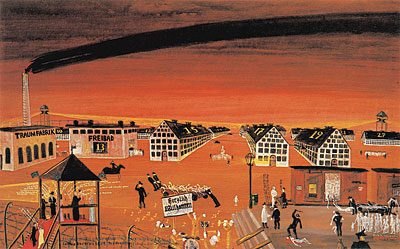
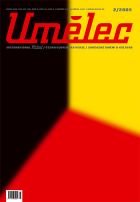





















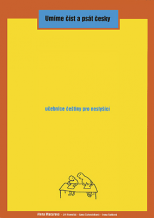

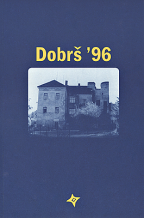
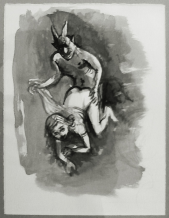


 We Are Rising National Gallery For You! Go to Kyjov by Krásná Lípa no.37.
We Are Rising National Gallery For You! Go to Kyjov by Krásná Lípa no.37.
Комментарии
Статья не была прокомментированаДобавить новый комментарий